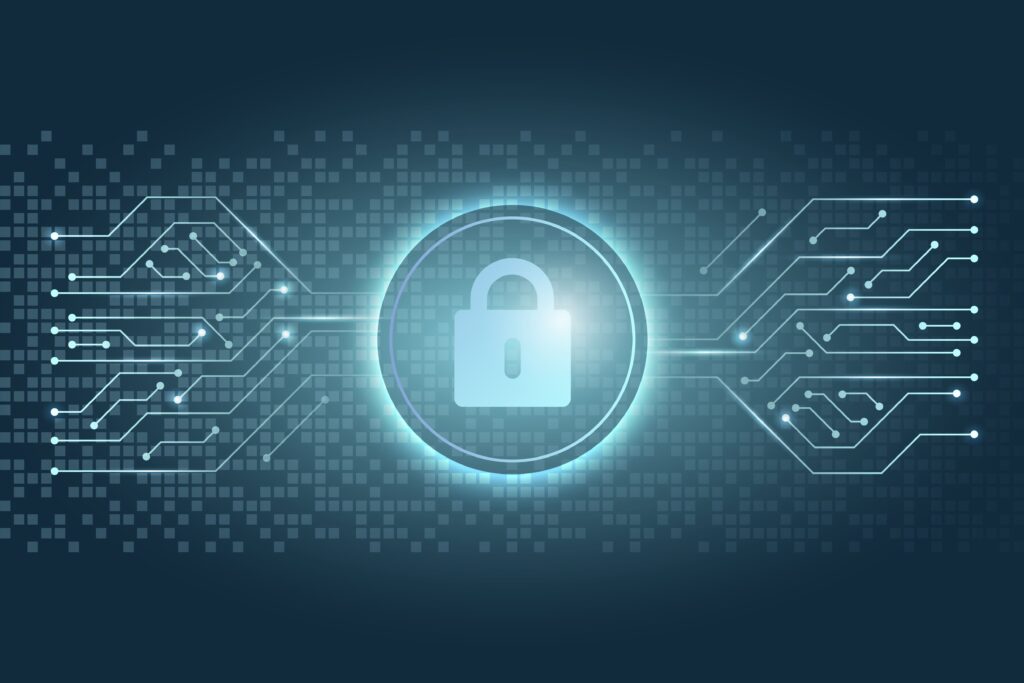Multiple controls and technologies can be installed or used to secure digital data. Ensure to secure all end-to-end points, to prevent security lapses for hacker entry
Encryption
Encryption is one of the best methods to secure your sensitive data. This method is possible by installing an SSL (Secure Socket Layer) certificate on your website.
Encryption is done with a pair of keys, i.e., public key and private key, which encrypts and decrypts data, respectively. The data, when encrypted, looks like a scrambled language.
Benefits:
- Despite penetration, the hacker cannot misuse the data since it’s encrypted and is unreadable.
- Without the decryption key, the encrypted data is gibberish and of no value. Hence it cannot be misused.
The AES (Advanced Encryption Standard) algorithm is the most trusted globally since it can combat multiple attacks.

Authentication
In this process called authentication, the login credentials of the users are verified to confirm their identity. This is the most pivotal defense to prevent intruders from accessing your sensitive data.
Though the authentication process looks simple from the outside, it’s a bit complex from a technical point of view.
Types of authentications include password-based authentication, multi-factor authentication, certificate-based authentication, etc.
The latest technologies include Single Sign-On (SSO), Breached Password Detection, etc., which help in strengthening the authentication process.
Tokenization
The tokenization process converts the sensitive data into a non-sensitive type named tokens. These tokens look like a value comprising of similar length of data.
Here the tokenized text is non-readable and undecipherable, just like the encryption process.
There is only one basic difference when we compare encryption and tokenization, i.e., encrypted text can be converted into readable text with the decryption key, whereas tokenized text is non-reversible. This makes it more secure.
Vulnerability Assessment and Risk Management Tools
Vulnerability assessment tools like Cloud-based Vulnerability Scanners, Network-based Vulnerability Scanners, etc., help detect threats that target your systems and networks.
Risk Management tools like SWOT, Risk Register, Brainstorming, etc., are used to trace risks for ensuring data security.

Data Erasure
When you need to wipe the data clean, the data erasure process works the best. This process uses software to erase the device data, making it completely irrecoverable
Cloud Access Security Broker (CASB)
CASB security tools usually stay between the user and the cloud. They monitor user behavior and ensure that the security policies are followed properly. In addition, it provides data visibility and data control to prevent cloud threats.

Data Masking
To prevent your sensitive data from being hacked, some business owners use the data masking process to trick hackers into their own game and protect business data.
They hide the original content with a modified content to secure the sensitive data. The most significant part of this process is that it is irreversible, thus making it more secure and cheaper than the encryption method.
Backups
Regular backups to ensure recovery of the data in case of contingencies. Regular backups help to prevent loss due to human errors, virus attack, hardware issues, or power failure incidents. There should be a proper data backup policy. Keep automated data backup that makes data secure even it is lost due to above discussed events
One-Time Password (OTP)
OTP or one-time pin is an authentication code for a single transaction. This helps in data security because even if the hacker discovers the code, the same code cannot be re-used to gain access to data

